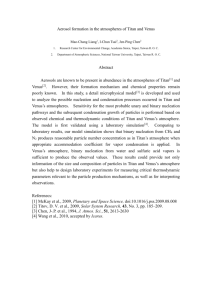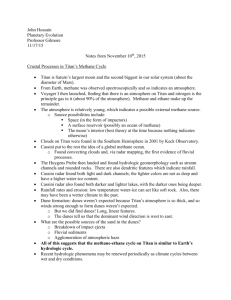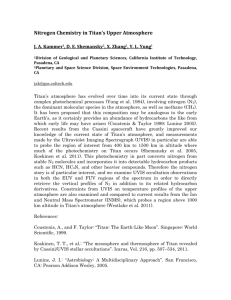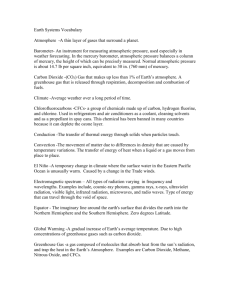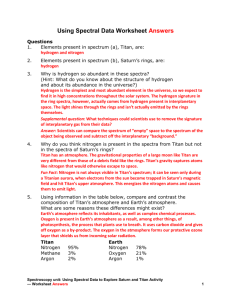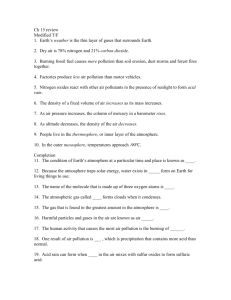Titan`s energy budget
advertisement
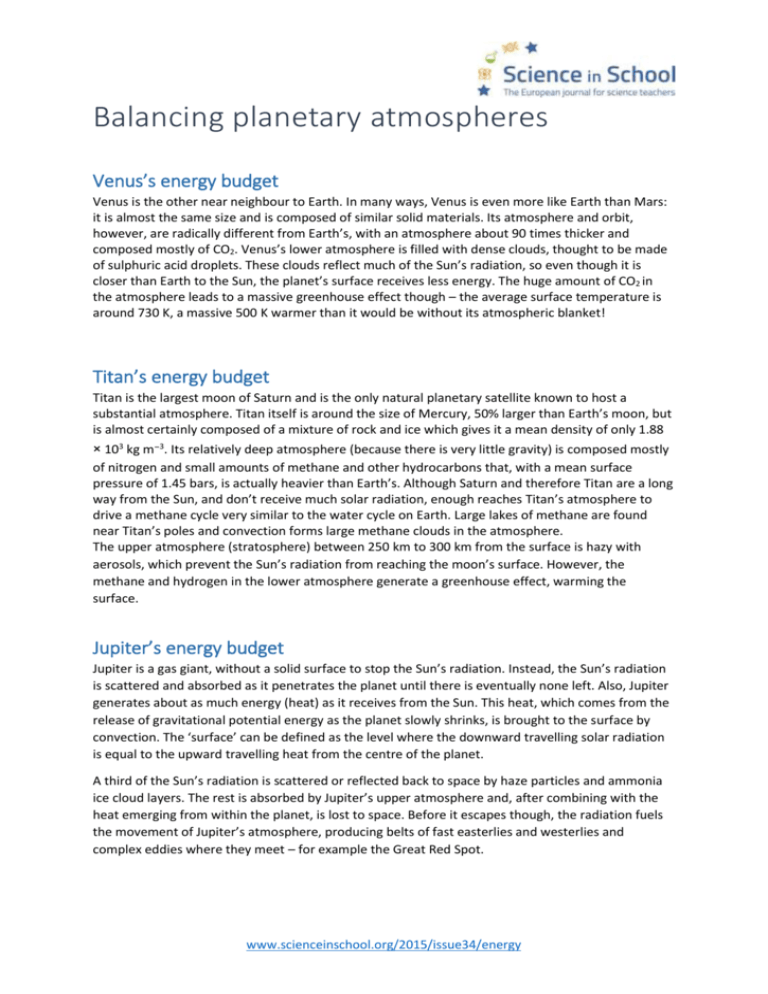
Balancing planetary atmospheres Venus’s energy budget Venus is the other near neighbour to Earth. In many ways, Venus is even more like Earth than Mars: it is almost the same size and is composed of similar solid materials. Its atmosphere and orbit, however, are radically different from Earth’s, with an atmosphere about 90 times thicker and composed mostly of CO2. Venus’s lower atmosphere is filled with dense clouds, thought to be made of sulphuric acid droplets. These clouds reflect much of the Sun’s radiation, so even though it is closer than Earth to the Sun, the planet’s surface receives less energy. The huge amount of CO2 in the atmosphere leads to a massive greenhouse effect though – the average surface temperature is around 730 K, a massive 500 K warmer than it would be without its atmospheric blanket! Titan’s energy budget Titan is the largest moon of Saturn and is the only natural planetary satellite known to host a substantial atmosphere. Titan itself is around the size of Mercury, 50% larger than Earth’s moon, but is almost certainly composed of a mixture of rock and ice which gives it a mean density of only 1.88 × 103 kg m−3. Its relatively deep atmosphere (because there is very little gravity) is composed mostly of nitrogen and small amounts of methane and other hydrocarbons that, with a mean surface pressure of 1.45 bars, is actually heavier than Earth’s. Although Saturn and therefore Titan are a long way from the Sun, and don’t receive much solar radiation, enough reaches Titan’s atmosphere to drive a methane cycle very similar to the water cycle on Earth. Large lakes of methane are found near Titan’s poles and convection forms large methane clouds in the atmosphere. The upper atmosphere (stratosphere) between 250 km to 300 km from the surface is hazy with aerosols, which prevent the Sun’s radiation from reaching the moon’s surface. However, the methane and hydrogen in the lower atmosphere generate a greenhouse effect, warming the surface. Jupiter’s energy budget Jupiter is a gas giant, without a solid surface to stop the Sun’s radiation. Instead, the Sun’s radiation is scattered and absorbed as it penetrates the planet until there is eventually none left. Also, Jupiter generates about as much energy (heat) as it receives from the Sun. This heat, which comes from the release of gravitational potential energy as the planet slowly shrinks, is brought to the surface by convection. The ‘surface’ can be defined as the level where the downward travelling solar radiation is equal to the upward travelling heat from the centre of the planet. A third of the Sun’s radiation is scattered or reflected back to space by haze particles and ammonia ice cloud layers. The rest is absorbed by Jupiter’s upper atmosphere and, after combining with the heat emerging from within the planet, is lost to space. Before it escapes though, the radiation fuels the movement of Jupiter’s atmosphere, producing belts of fast easterlies and westerlies and complex eddies where they meet – for example the Great Red Spot. www.scienceinschool.org/2015/issue34/energy Average distance from the Sun Surface temperature average (range) Radius Major constituents of the atmosphere Earth Mars Venus Titan Jupiter 1 astronomical unit (1.496 x 1011 km) 288 K (240-310 K) 1.52 AU 0.723 AU 9.55 AU 5.2 AU 216 K (140-290 K) 730 K (720-740 K) 93 K 250-280 K 6378 km Nitrogen (78%), oxygen (21%), water vapour (1%) 3396 km Carbon dioxide (95%), nitrogen (2.7%), argon (1.6%) 6052 km Carbon dioxide (96%), nitrogen (3.5%) 2575 km Nitrogen (98%), methane (1.5%), hydrogen 71 492 km Hydrogen (90%), helium (10%) www.scienceinschool.org/2015/issue34/energy
